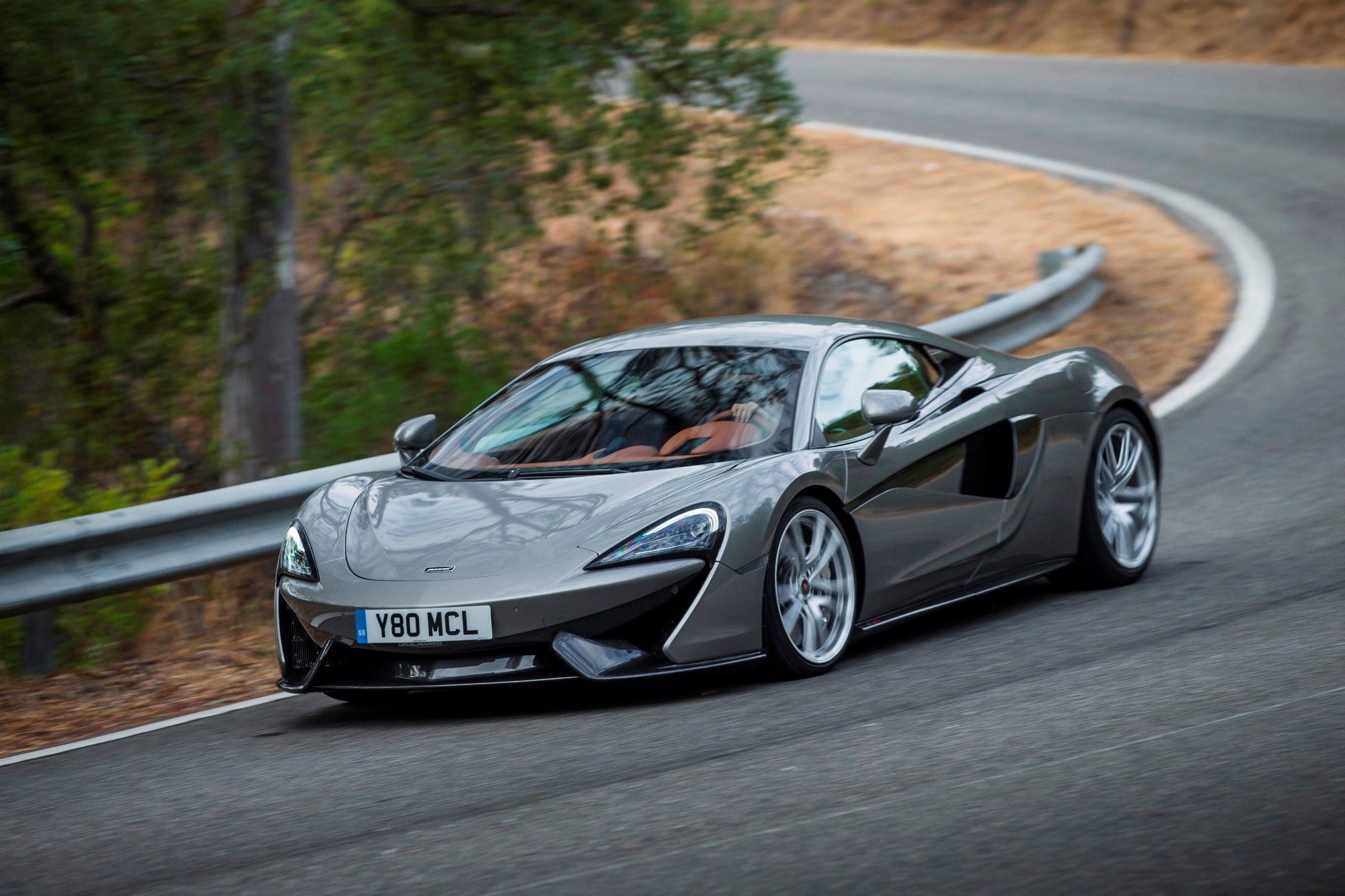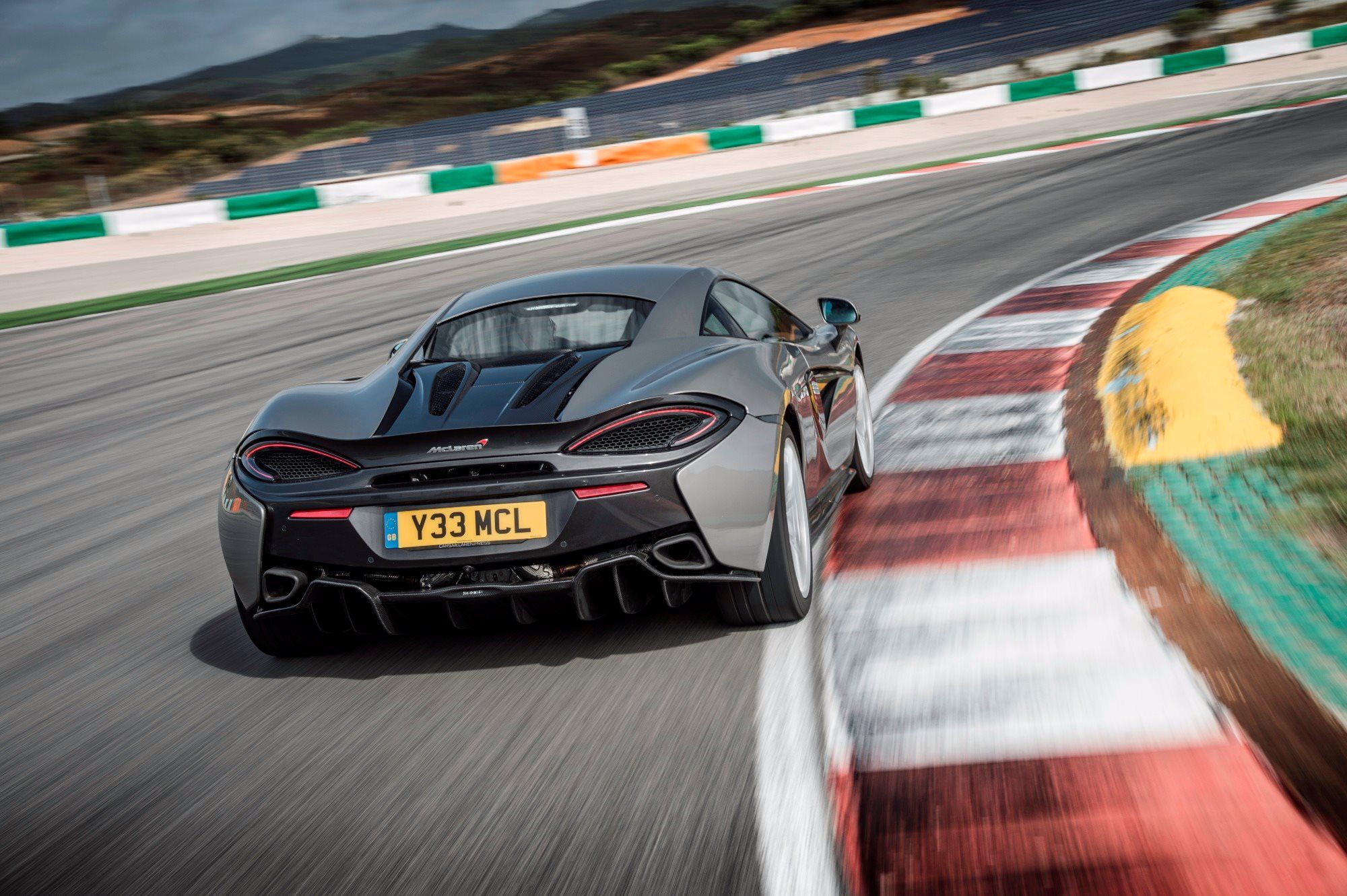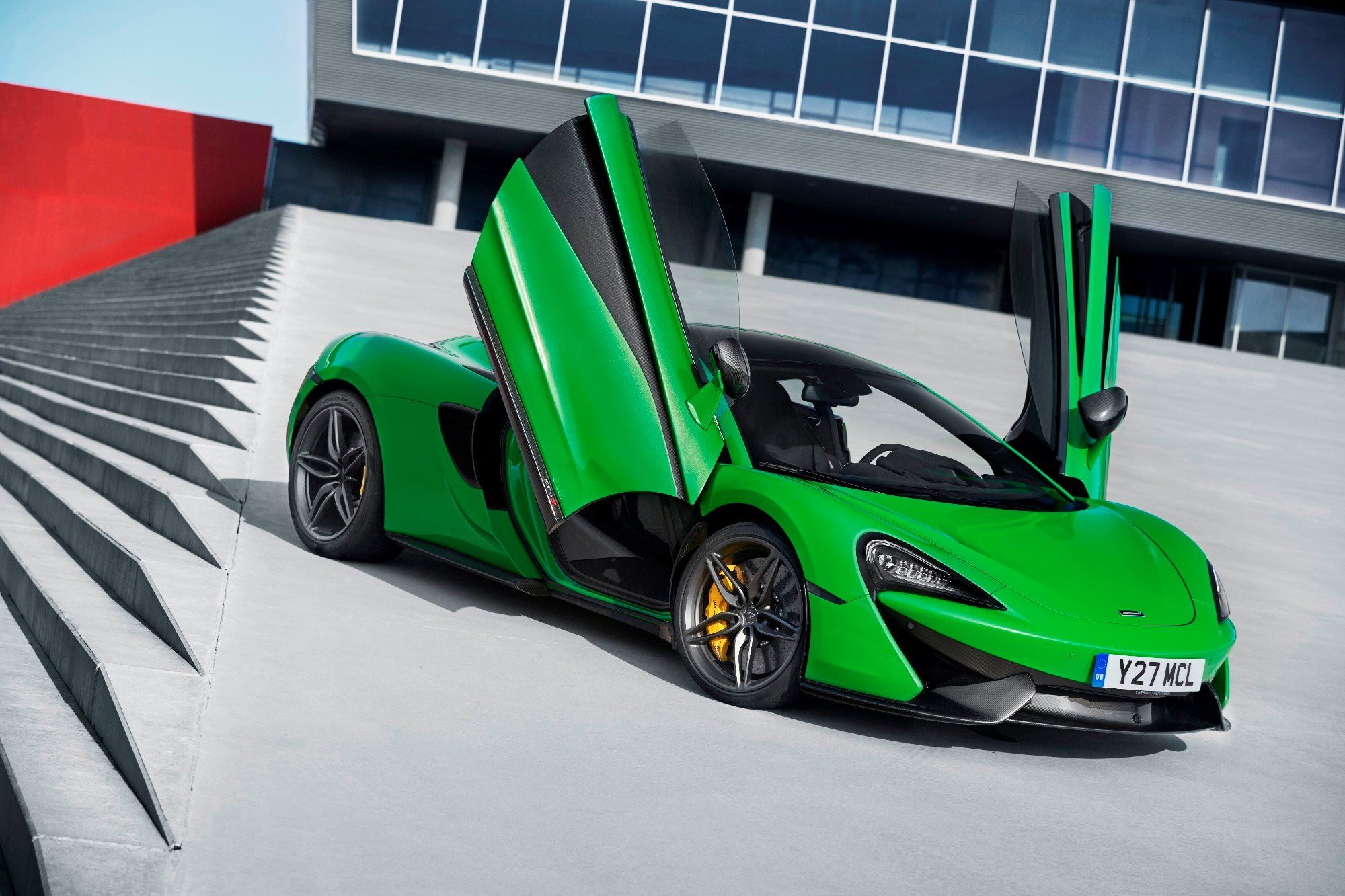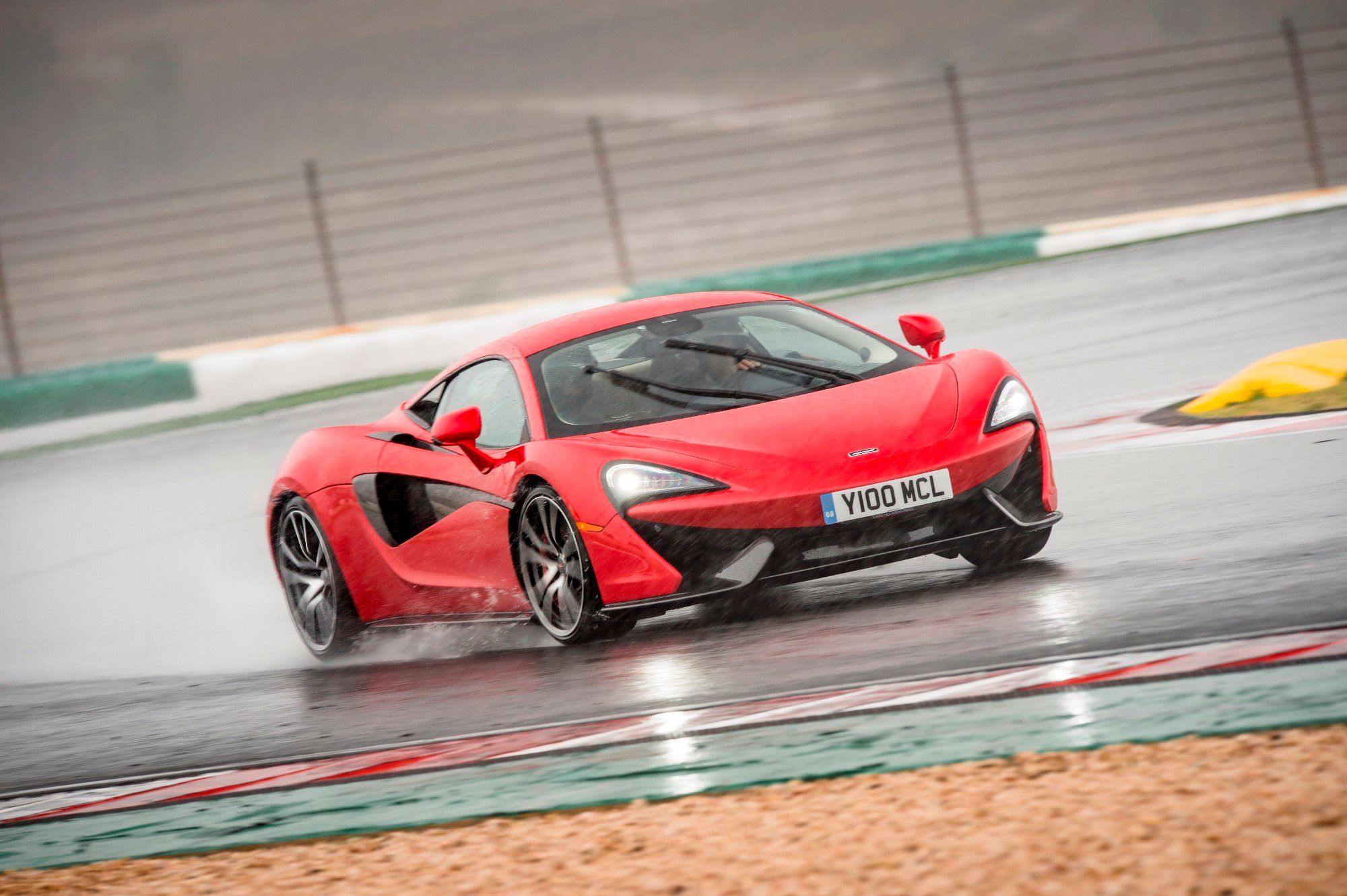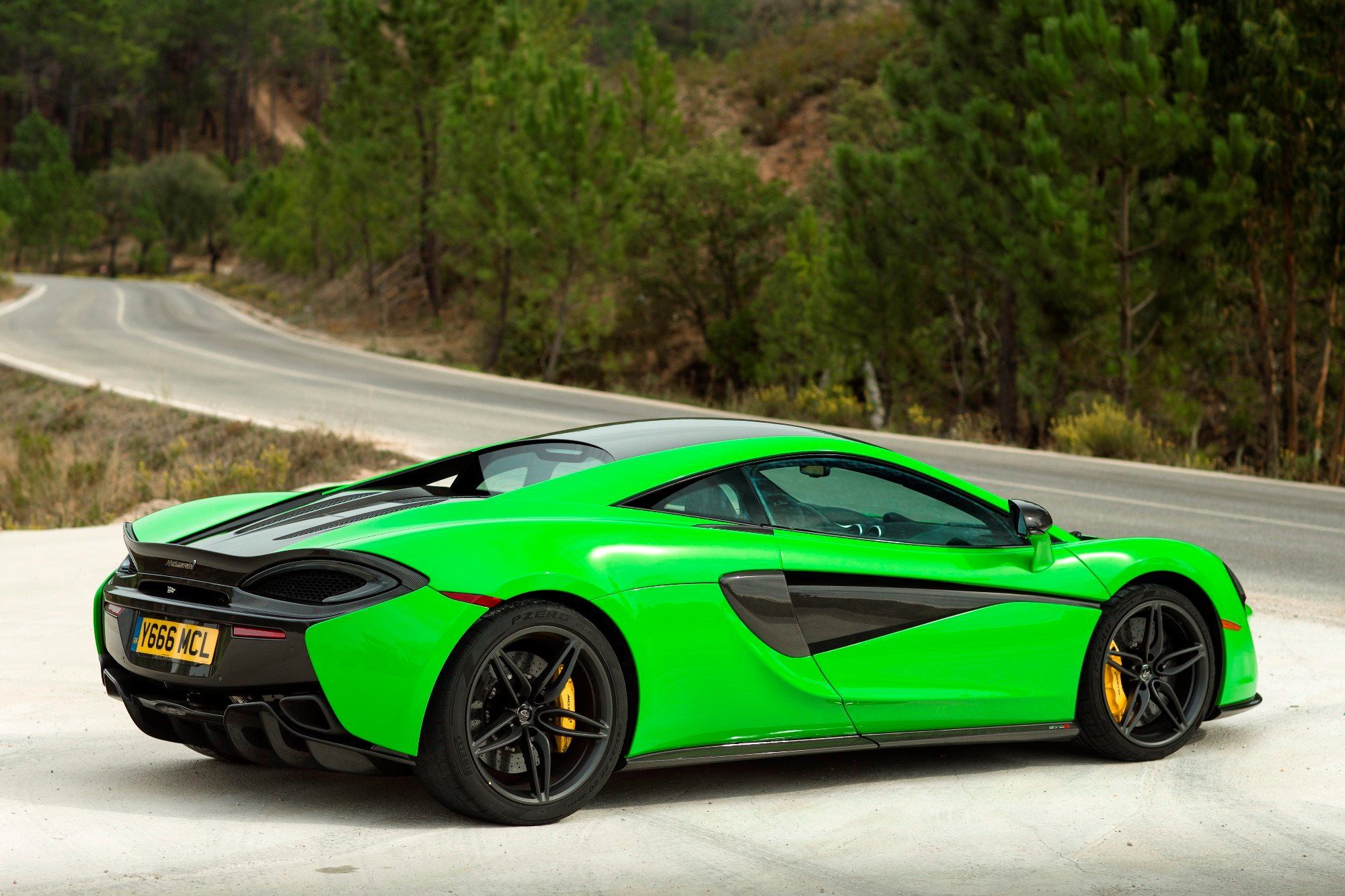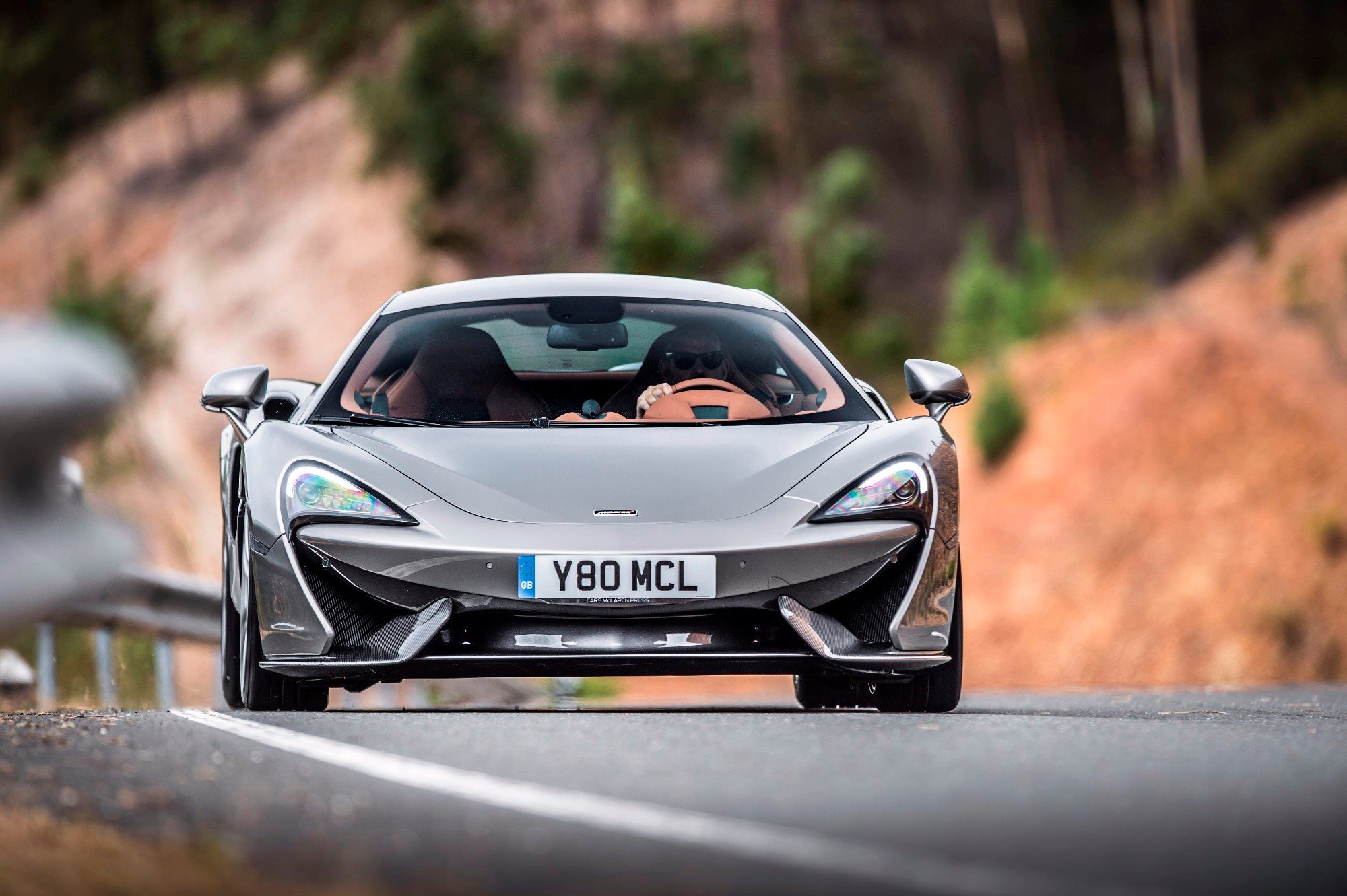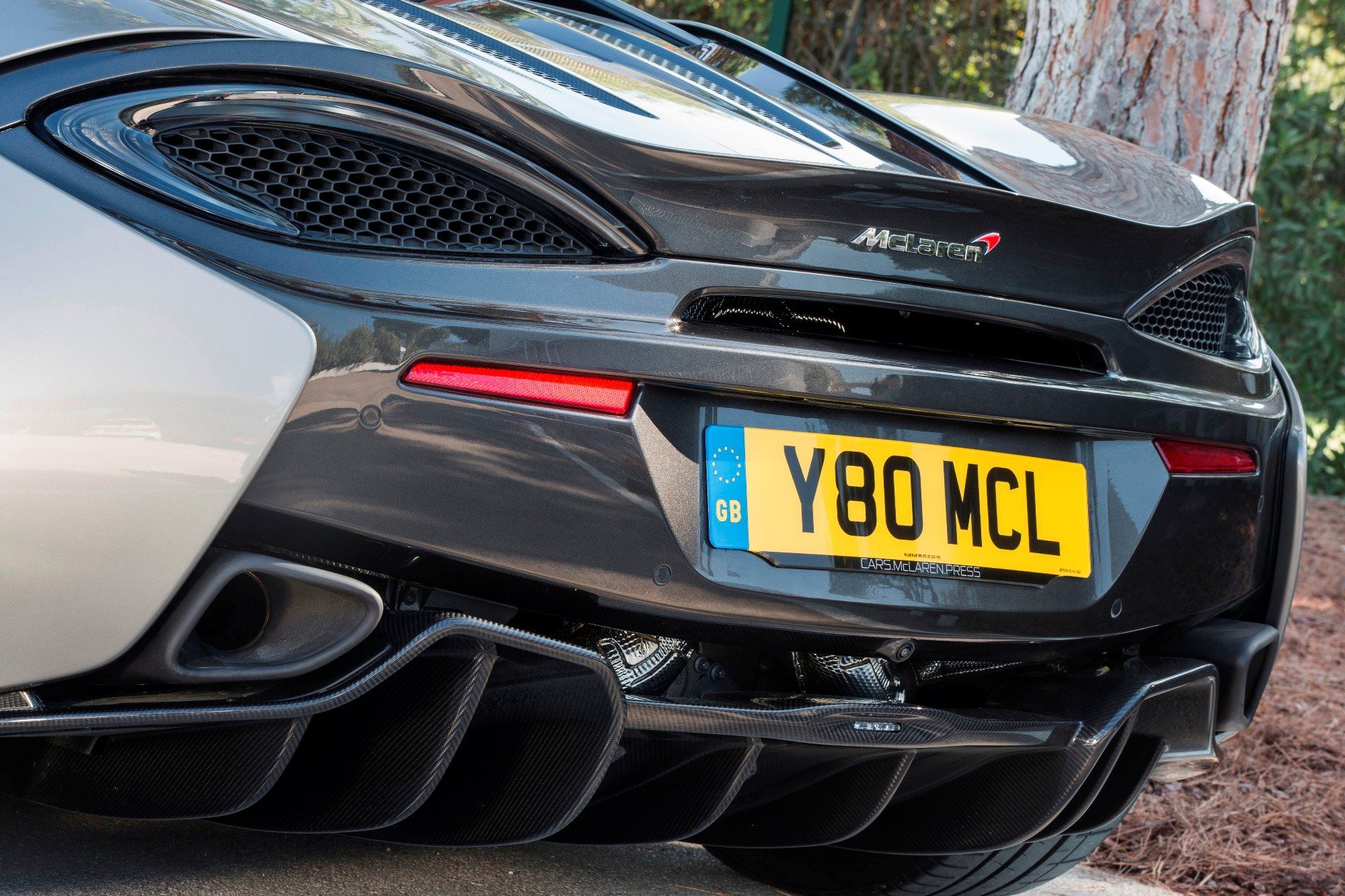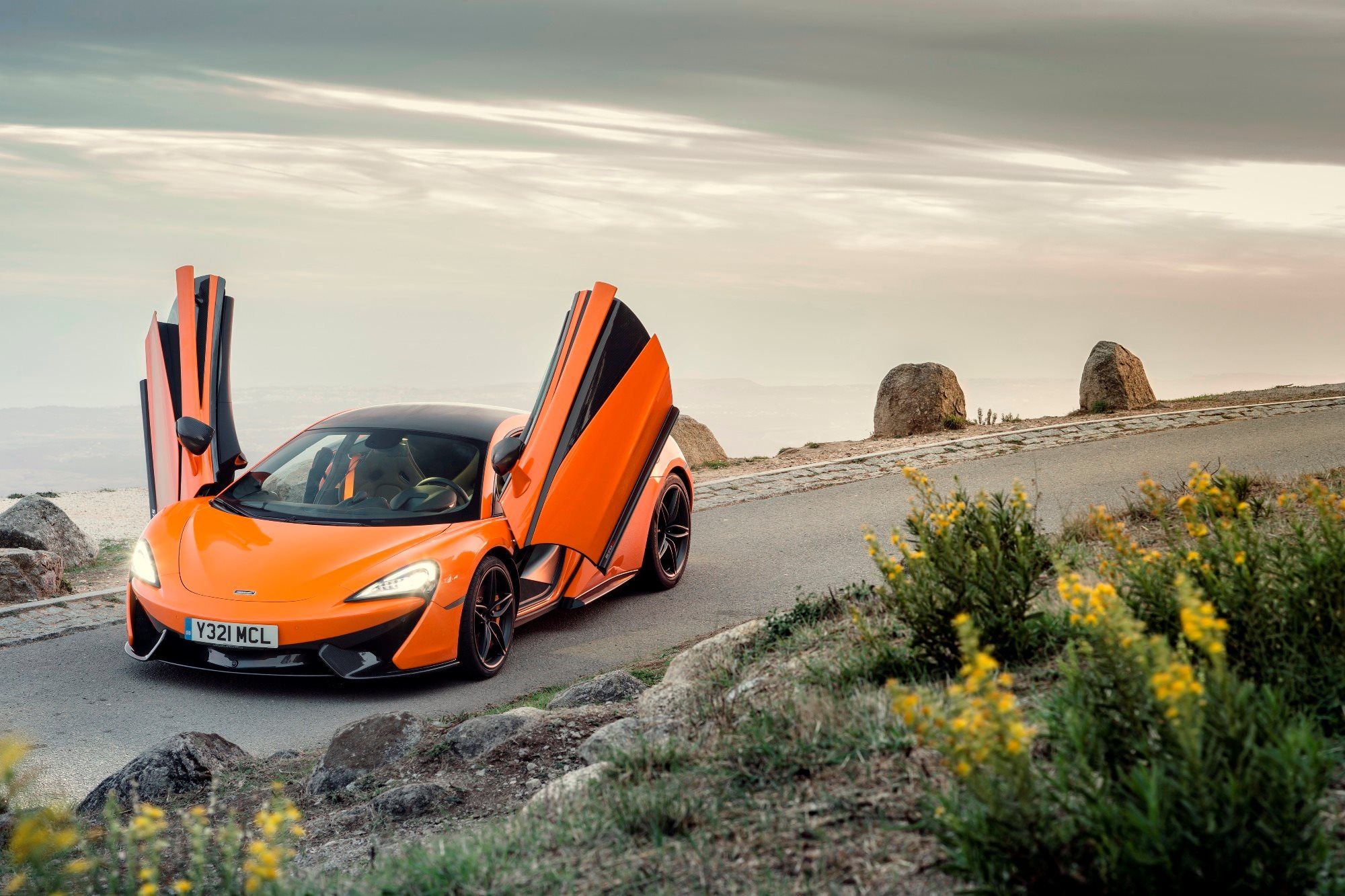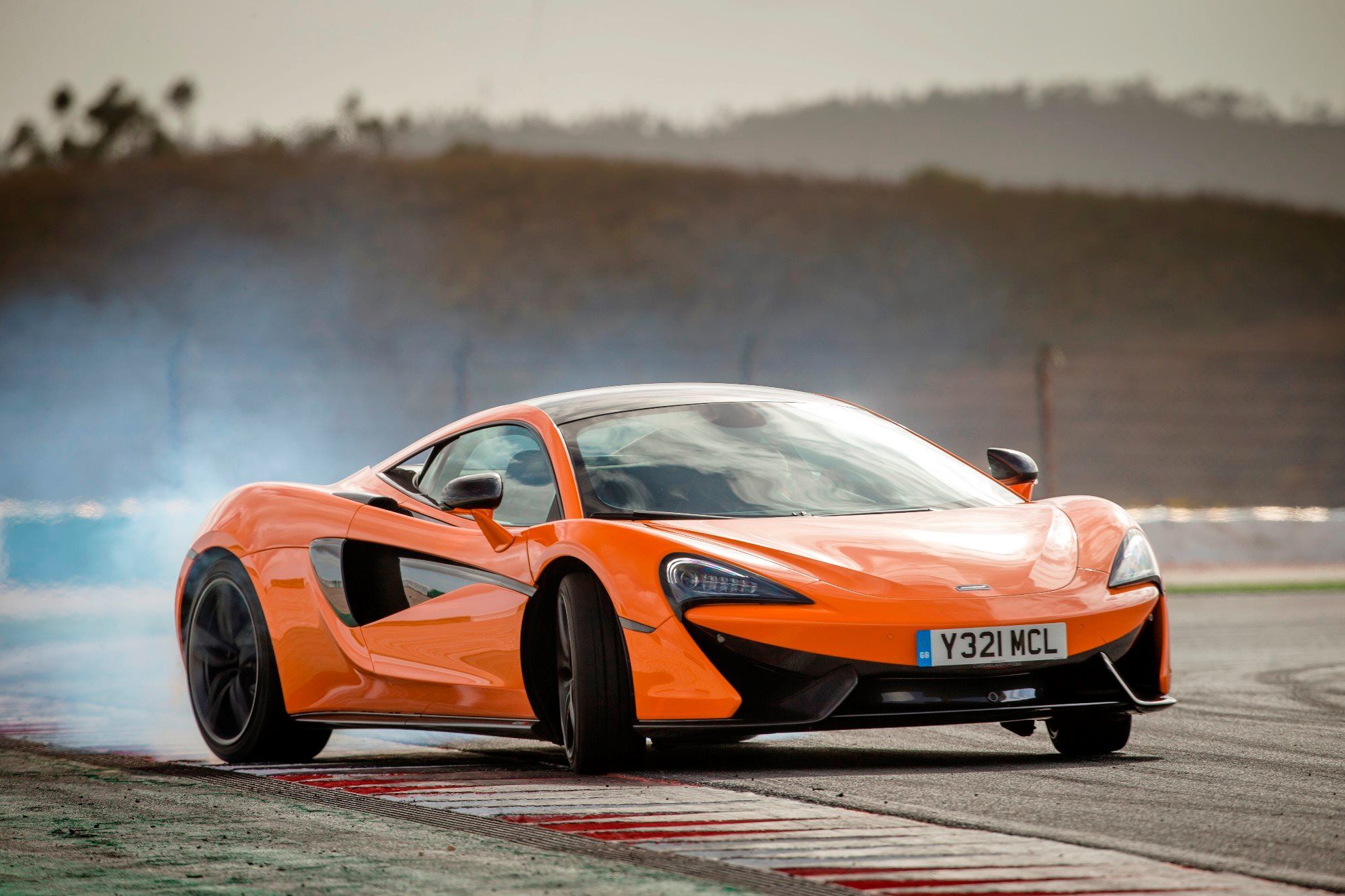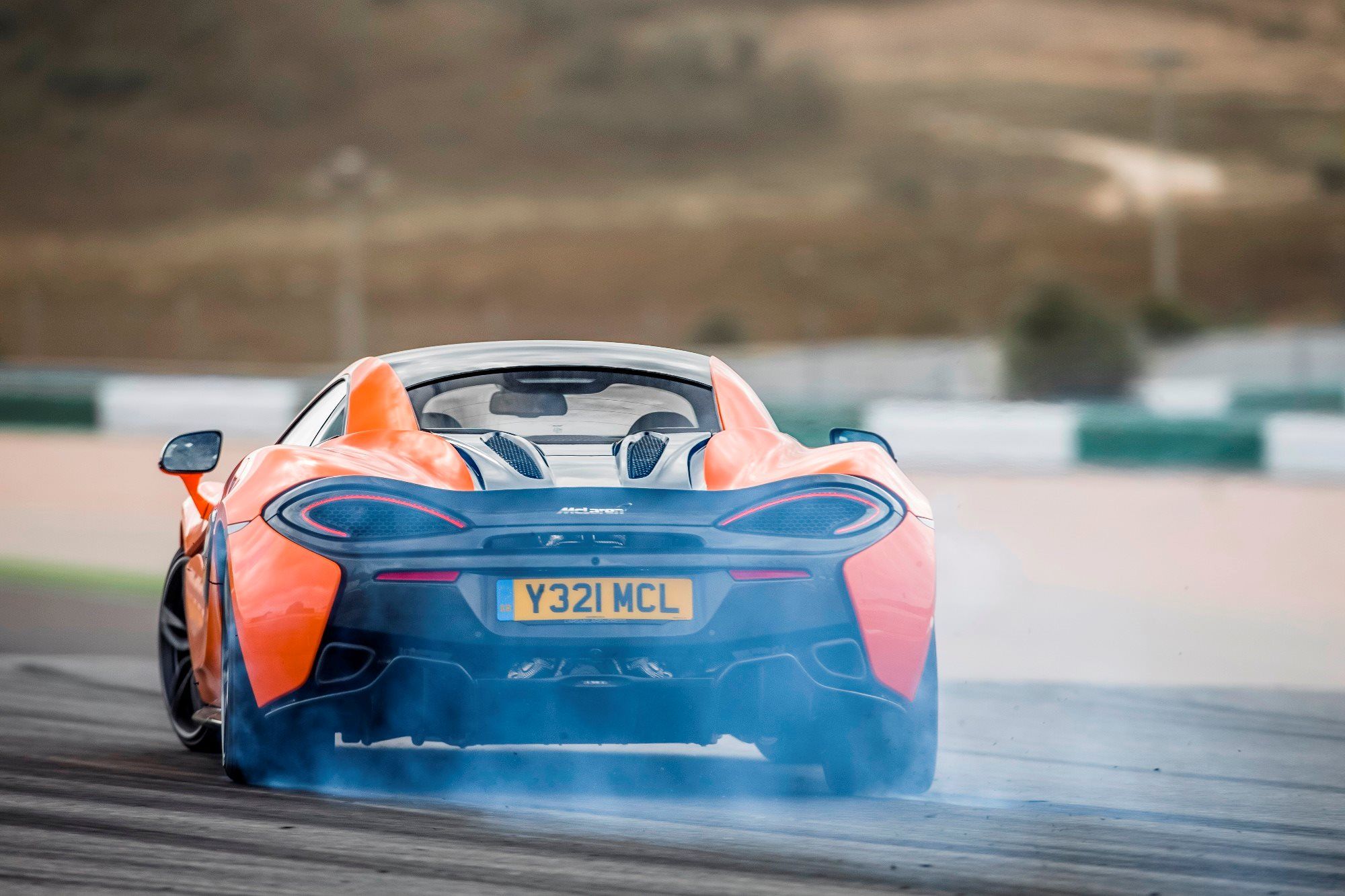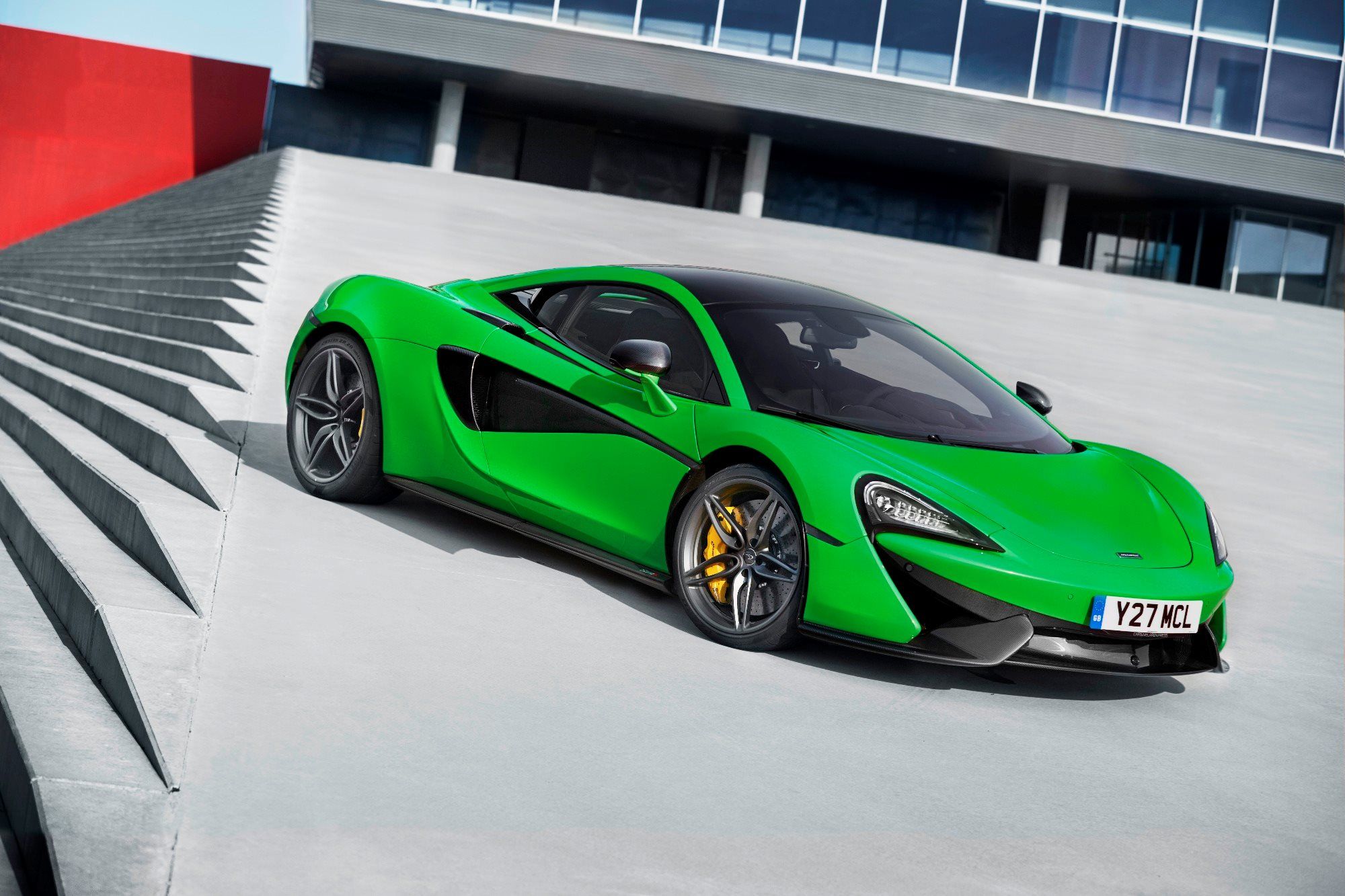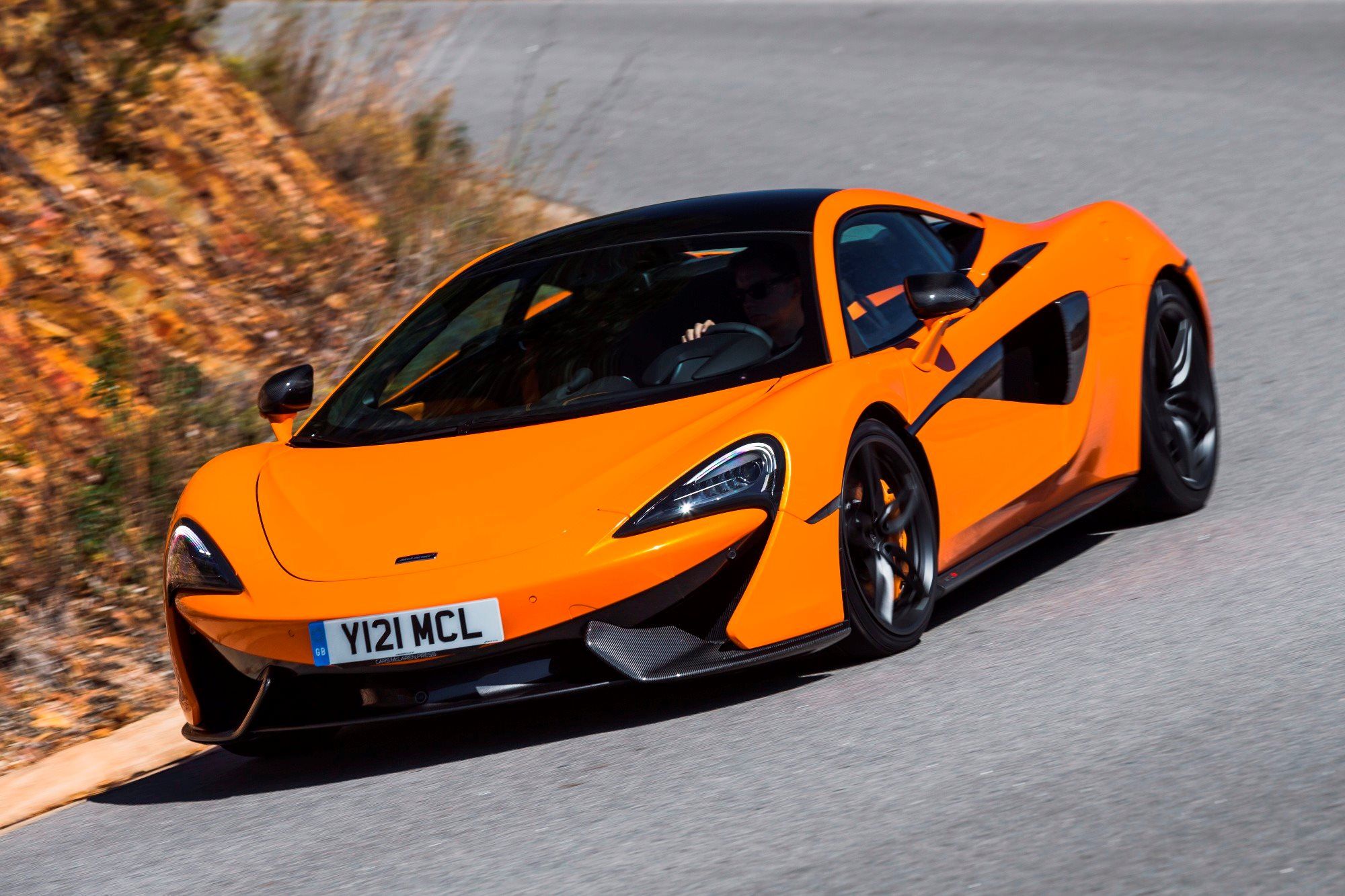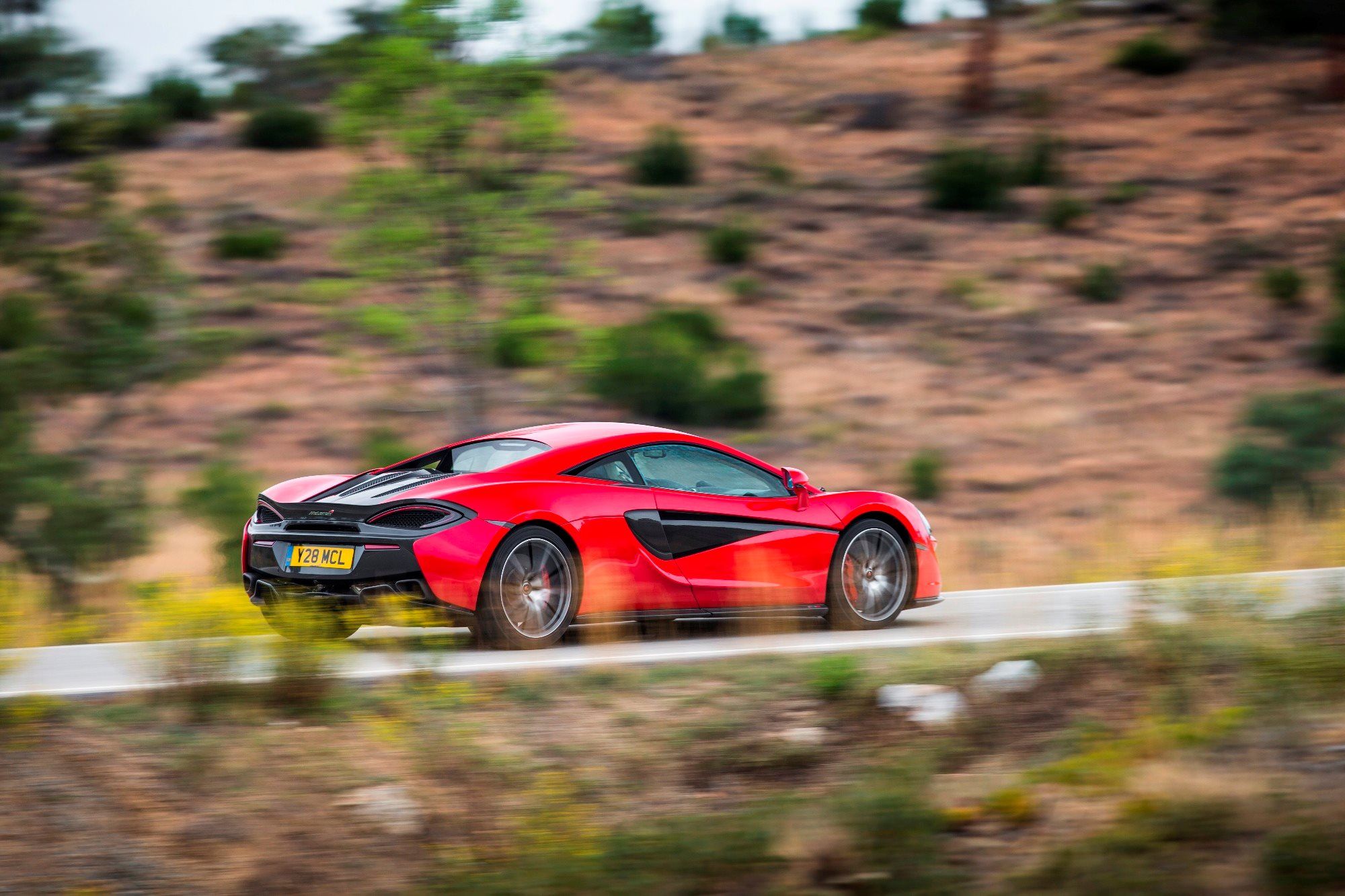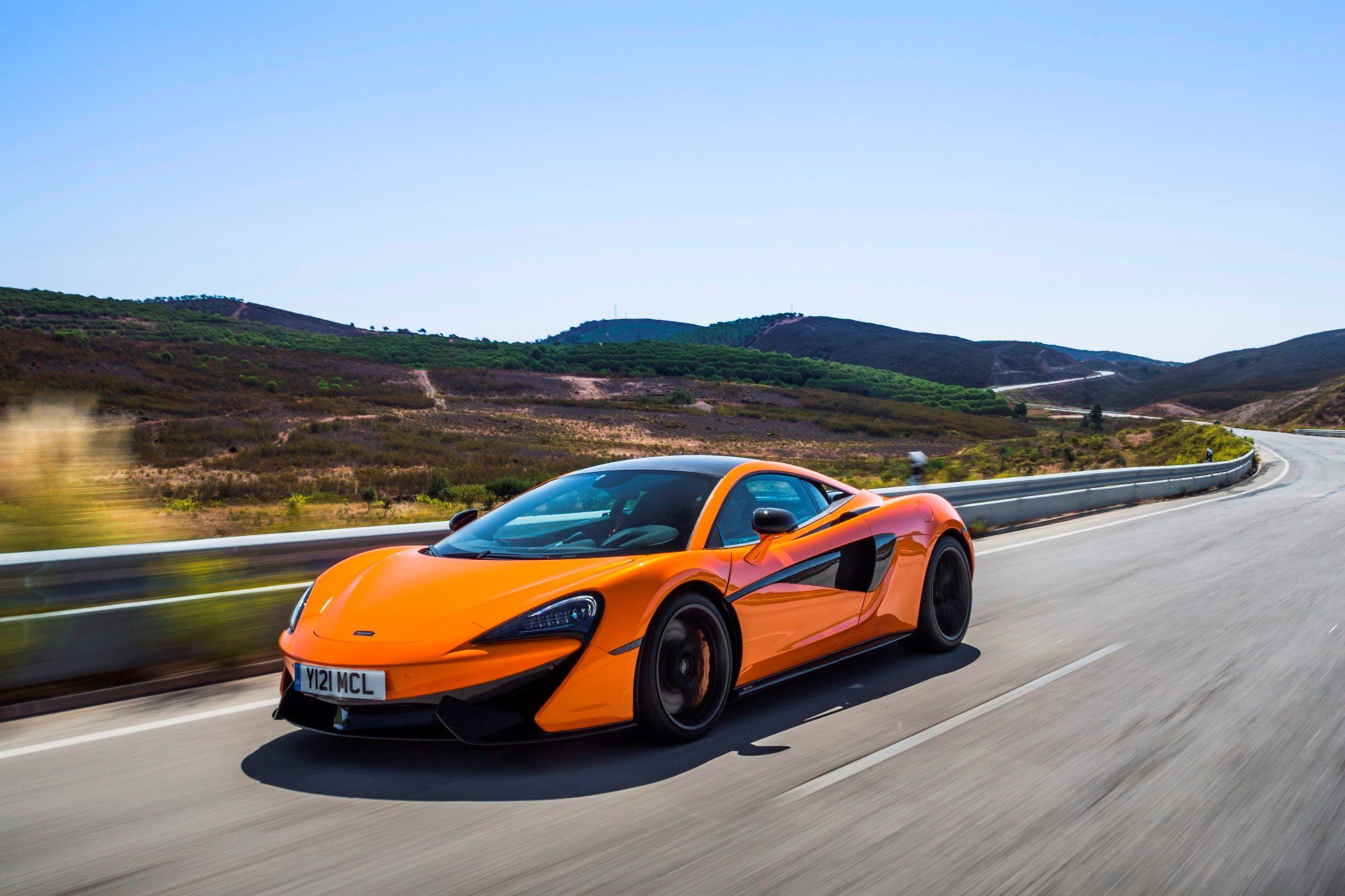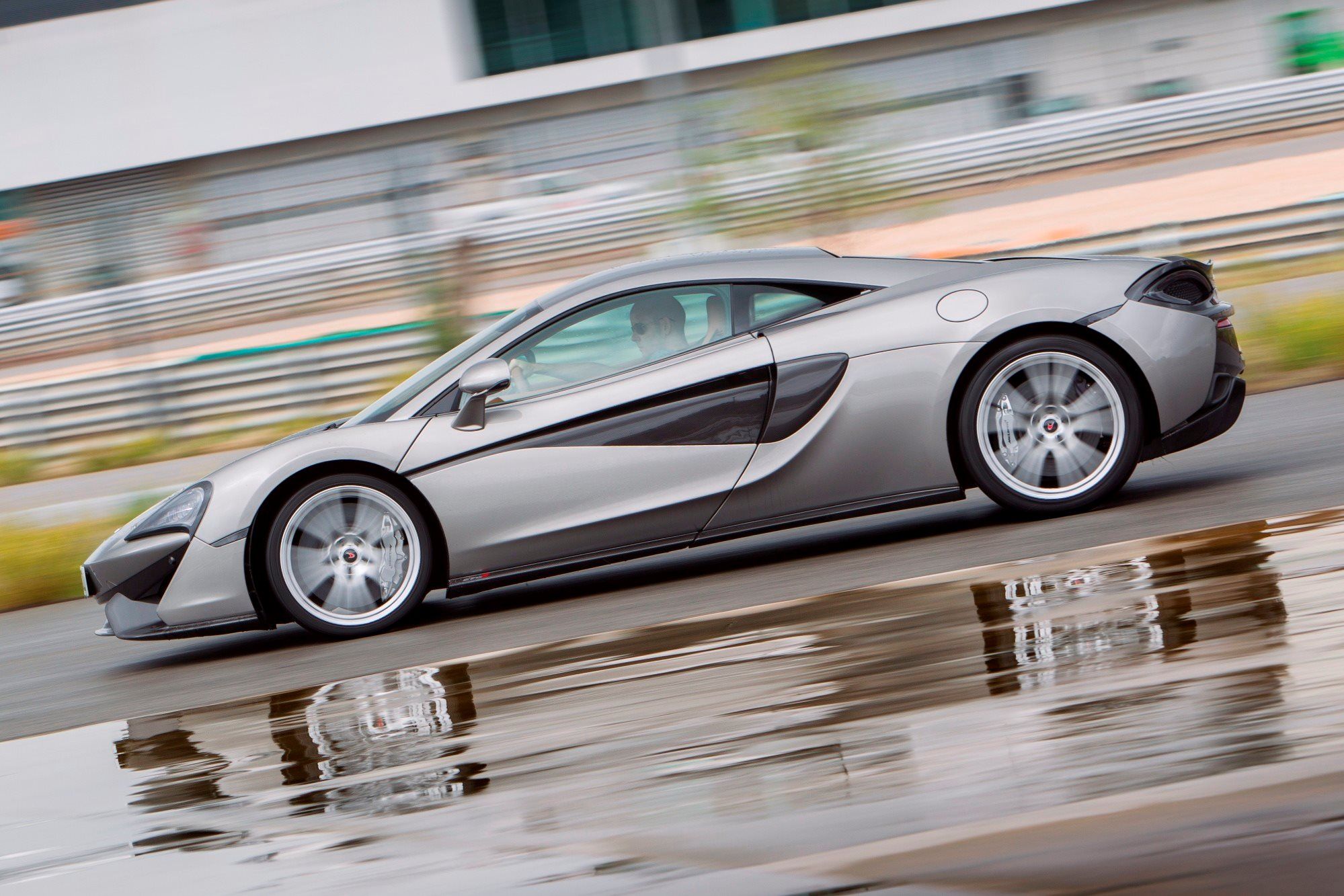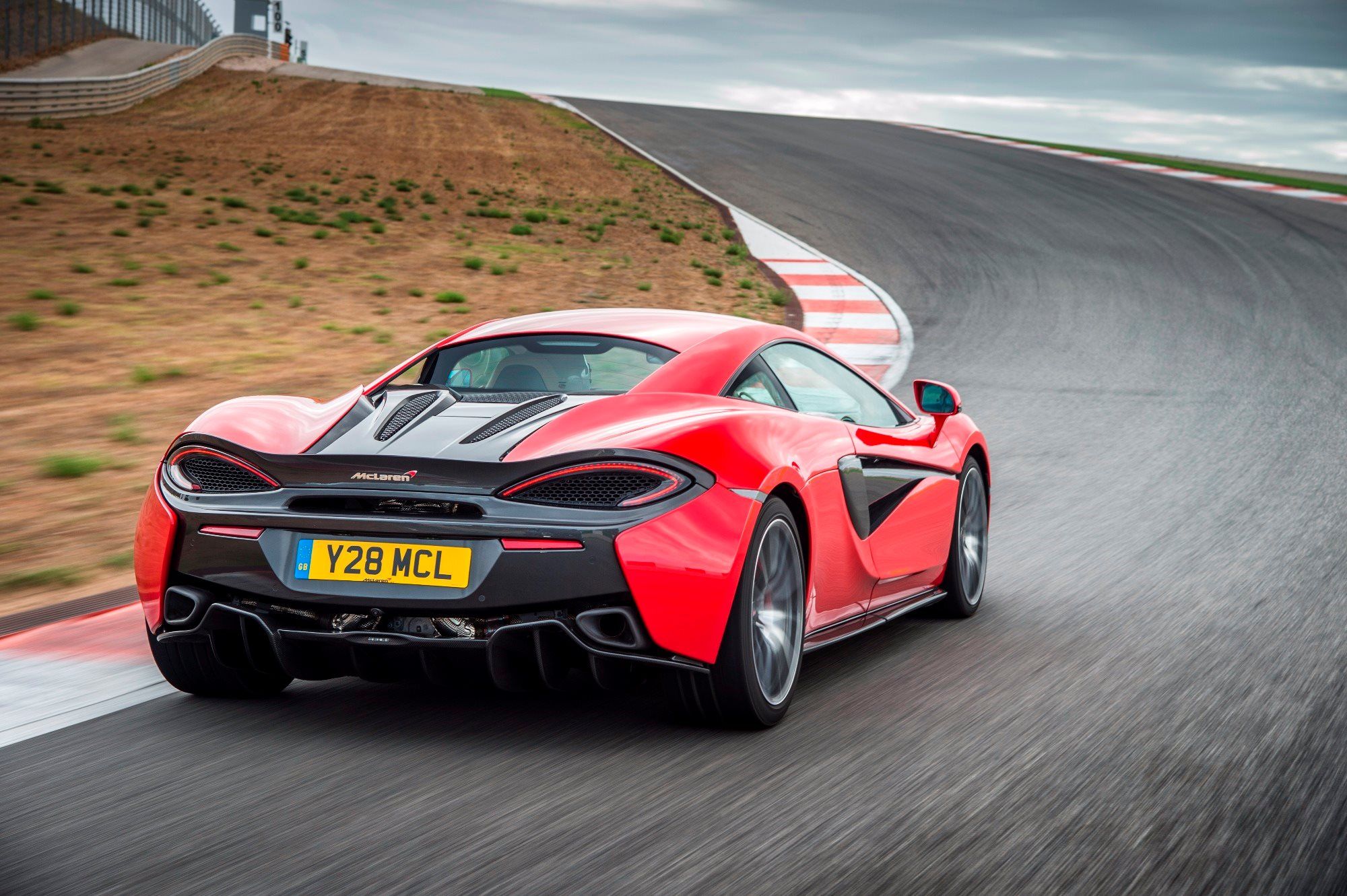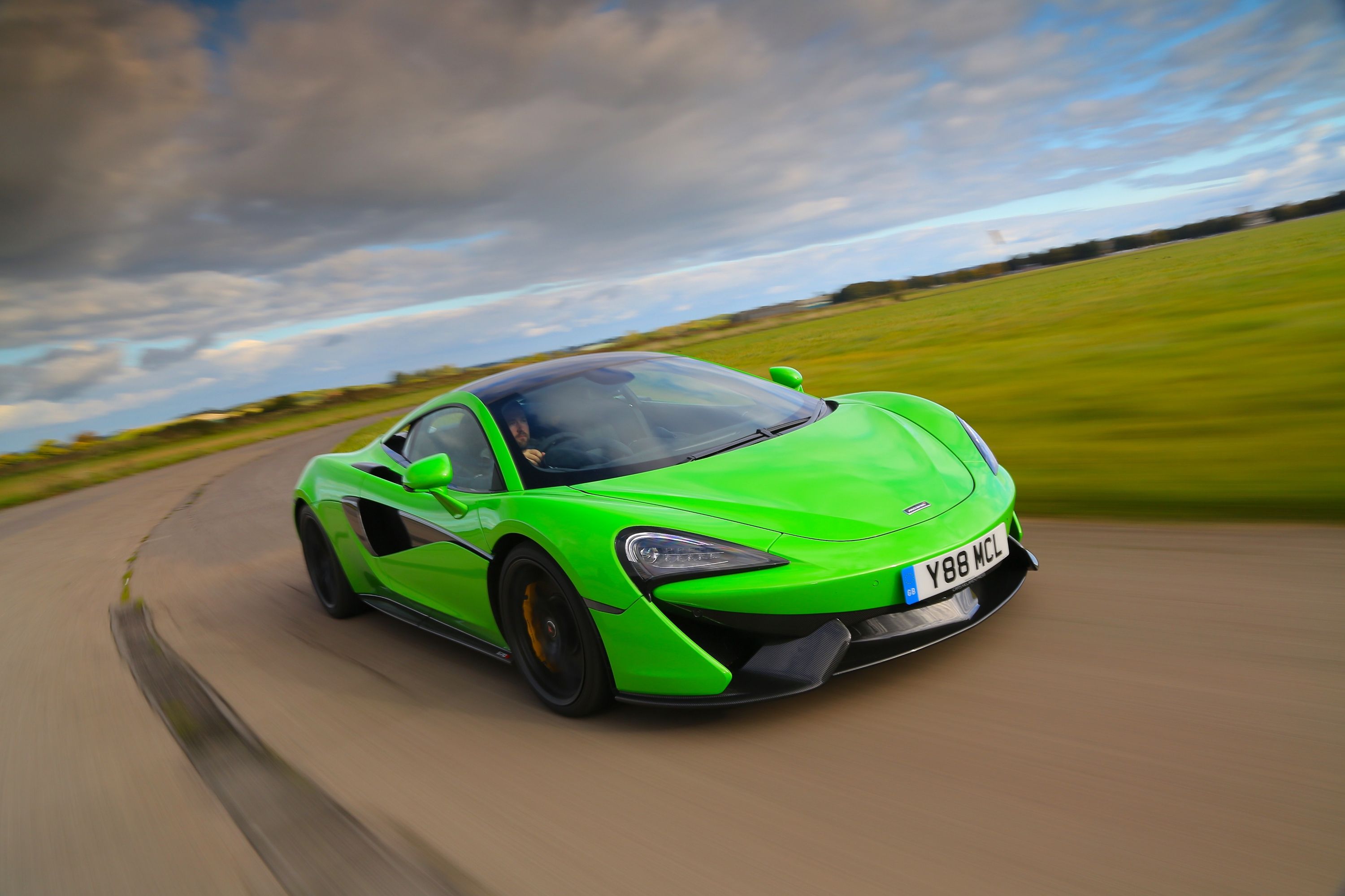
Each of us is a lens, seeing from who and from where we are. You could argue that my preconceived notions married to the perfect testing grounds for the 570S has skewed my opinion disproportionately in its favor. To that charge, I plead guilty. But give an innocent man with no previous McLaren experience the car on any stretch of road in the world, and he will reach the same conclusion: The McLaren 570S is an immense sports car. I know this for a fact after becoming intimately acquainted with it on Europe's finest driving roads. And I know you would too.
My journey to Portimao, Portugal, began in the summer, with a neck-snapping sprint up the Goodwood hill climb in the 650S Le Mans edition, and a glorious afternoon spent with a 12C in London; these Made-in-England experiences providing a useful point of reference. Two spectacular cars, yes, but the 570S is the car that will sustain McLaren's long term ambitions. Its importance to the marque cannot be overstated. By 2017, McLaren aims to have 100 retailers in over 30 markets worldwide, more than doubling its production rate to 4,000 cars per year and, according to Global Communications Director Wayne Bruce, mission complete in terms of production output.
There is one more P1 to build (the classy Ron Dennis leaving his model for last), and a handful of P1 GTRs. After that, the Ultimate Series will take a break. Technological and powertrain advances will dictate when a new model enters the elite range. But don't expect anything to arrive this side of 2020. With the 12C being discontinued, and after all 500 units of the 675LT and 50 units of the 650S Can-Am Edition are made, it will be left to the 650S Coupe and Spider to keep the Super Series alive, making up around a quarter of the cars built at the McLaren Technology Centre (British company, British spelling).
Considering 14 of the 20 or so cars handcrafted in Woking on any given day will be Sport Series models, you can appreciate that the Sport Series is a big deal for McLaren. The 540C will be sold alongside the 570S, but only in markets that demand them. So far, the head of the US market has declined that particular invitation. A Spider is slated to arrive in 2017 and another derivative will arrive in Q2 next year. While early guesses tagged this as a sporting brake, we received swift confirmation to ignore this particular rumor. The British carmaker's business model and sustainability relies on selling these in massive volume, relatively speaking.
Remember we are talking about a tiny production output compared to mainstream cars. Where a Ford Focus takes around 20 hours to make, the craftspeople in Woking spend 188 man hours cobbling together every single 570S. That craftsmanship is most apparent in the cabin, which boasts a far superior driving space than the more track-focused 650S. It's also wider and more spacious, while the new carbon-fiber chassis has made it easier to get in and out thanks to a lower, narrower sill. The diehedral doors have also been reworked to provide passengers a bigger take off point from where they can plunge (more) gracefully into the low-slung seats.
The LCD instrument display has been borrowed from the P1 with distinct graphics for different driving modes, there's a glove box, two vanity mirrors, cup holders, clever cabin compartments (150 kg of luggage space in total) and a 1,280-watt Bowers & Wilkins providing the sort of aural quality you'd expect of a top-end home unit. The seven-inch touchscreen infotainment display is intuitive and clear, while various shades of hand-stitched leather and Alcantara coupled with satin chrome and carbon-fiber trim provide just the right level of decadence.
Keeping the car trim was integral to the overall design. From the Bentley-benchmarked LED lights through the Kevlar speaker covers to the patented 'superformed' aluminum body panels (the one covering the mid-mounted engine weighs just 4 kg), efforts to minimize mass were taken with every aspect of the 570S. If the hypercar trinity marked the final battle of the horsepower war, the 570S has drawn first blood in the fight for lightweight. In terms of being easy to drive, all McLarens are created equally. The 570S is just more equal than others. Stick it in Normal and you could trust the car to a driver with a day-old license. But there are modes for everyone.
A new ESC system can be controlled independently and now comes with a 'Dynamic' mode, essentially there to make drifting a bit easier with reduced interference. Engaging whatever the mode, the differences between Sport and Normal are subtle at first, becoming more defined as you push the car with palpably greater throttle response and quicker shifts. To keep drivers on top of their game, McLaren gives them the option to fit the 570S with three track cameras (in the cabin behind the driver, and at the front and rear) for use with the Track Telemetry app.
Similar to the Corvette Stingray's Performance Data Recorder, the aim is to record lap times and vehicle info while on the track via GPS, with video footage downloaded to a USB stick. But you can just easily map your course to work and try and beat your time. Driving to and from the office in the 570S will become the best part of your day. Like the 650S, the 570S is named after its PS engine output, translating to 562 hp. Head of Powertrain and the man with the best job title in the world, Richard Farquhar, has worked on all of McLaren's award-winning road car engines. M838TE is his latest creation, boasting 30% new components compared to the unit sitting in the 650S.
Some were made to improve efficiency (22 mpg) and reduce emissions (249 g/km), others (dry sump lubrication and a flat-plane crankshaft) to save weight and allow the engine to sit as low as possible. The new powerplant was engineered to deliver a progressive torque curve over a broad powerband, with 443 lb-ft coming in at 5,000 revs. A stainless-steel equal-length exhaust manifold provides authentic feedback, and the exhaust harmonies are addictive to listen to as the twin-turbo V8 becomes more alive while rapidly shifting through the seamless-shift seven-speed transmission or manually via the steering-wheel-mounted rocker-shift paddles. Chasing the scream, the 570S compels you to push it harder and use all of its 8,500 rpm.
The Algarve International Circuit was taken over by motorbikes for the weekend, so exploring the car's limits on the track wasn't an option. More road time was promised, which helped serve as an immediate tonic for the disappointing news. It also provided the opportunity to peruse the McLaren art exhibit made up of the MonoCell II carbon-fiber chassis and other exquisite parts of the car. Vermillion Red and Mantis Green examples of the 570S had been transported from Surrey, but the Ventura Orange model was my first taste of the Sports Series and one that will linger long in the memory.
Ambling through town, the black-leather bucket seats held me firmly in place, poised for a spurt of power whenever conditions permitted. McLaren claims the 570S reaches 62 mph from standstill in 3.2 seconds, 124 mph in an eye-popping 9.5 seconds and tops out at 204 mph. Without admitting anything, let's just say I was able to verify at least two of these claims when hitting the highway en route to the track. The benefit of the carbon-fiber shelled racing seats, in addition to being 15 kg lighter, was felt more on the twisty roads. But if your daily commute contains a fair amount of cruising, the optional electric and heated memory seats are worth the extra couple of grand.
These were used to warm my bum on the luxurious-spec Blade Silver 570S, an added treat when tackling southern Portugal's serpentine mountain roads on my return to base. I say tackling because an overnight storm provided extra challenges on the already testing tarmac. Deadwood, debris, and the occasional tree branch appeared at random, often in the middle of making a no-clue-just-how-bloody-sharp corner. McLaren fitted specially-developed, Pirelli P-Zero Corsa tires on the 570S. The narrower-spec rubber grips when you really want them to, while providing phenomenal agility on tight hairpins and outrageous standing-start acceleration.
Instant reactions to inputs, a fast steering rack ratio and superb visibility allows you to place the car where you want, when you want at any speed. It's an all-consuming, engaging experience, and the electro-hydraulic steering makes for one hell of a chatty steering wheel. Driving under overcast granite gray skies, through pockets of torrential rain and heavy winds, and eventually with a setting sun cracking the porcelain blue, the 570S instilled utter confidence whatever the weather. Not that surprising given the P13 was put through 1,500,000 km of relentless road tests in the three years since Chief Designer Rob Melville sketched his design for the car; from the -30 degree (-22 F) Arctic Circles of northern Sweden to the 50-degree (122 F) heat of the Mojave Desert.
When a particularly obstinate truck driver insolently failed to pull over and let me pass, the blood returning to my white knuckles, thoughts drifted to the previous night's product briefing. Head of Sport Series Andy Palmer revealed a slide of that original sketch, before demonstrating how little has changed with the design in the ensuing three years on a 570S that had been crane-lifted onto the roof garden of the hotel's presidential suite. I asked Andy to help me better understand where the car sits in the echelons of sports and supercars, venturing the 570S is a supercar that sits in the sports car market. Andy retorted that "with the 570S, we created a sports car for the supercar segment."
Whether you judge the 570S by raw numbers that include a power-to-weight ratio of 434 hp-per-ton a and 0-100 mph time of 6.3 seconds; by looks, dictated by aerodynamics with stunning signature design cues from every angle; or by performance and handling, this is a supercar. But whereas you won't always want to take a supercar out for a quick errand, you will with the 570S. Its luxurious, more useable interior and fun-to-drive-at-every-speed nature makes this a sports car. And when it comes to the price – starting from $184,900 (let's call it $200,000 after the must-have options) – it's on par with the likes of the 911 Turbo S.
Whether McLaren is able to convince hardcore Porsche fans (ditto Audi R8) to swap allegiances remains to be seen. But first-time premium sports car buyers, and even those looking at the Lamborghini Huracan, now have a serious alternative to consider in the shape of the compelling 570S.

